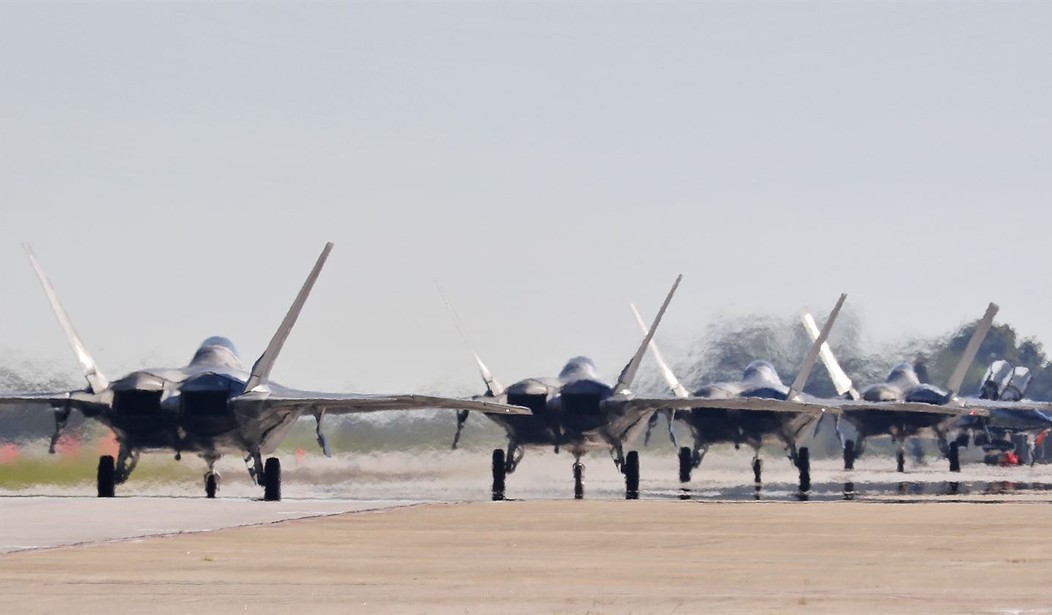This New Weapon May Be Able to Neutralize an Enemy's First Strike
Late in World War 2, in the European theater, the Germans hit the Allied air forces with something new: Jet fighters. Chief among them was the Messerschmitt Me-262, a big, brutal twin-engine beast packing four 30-mm cannons. It was considerably faster than the American P-51 Mustang, generally considered the best piston-engine fighter in the air at the time. It was near-impossible to defeat in the air, but it was slow and cumbersome on taxi, vulnerable during takeoff and landing, and required a long runway.
So we went after them when they were on the ground, destroying aircraft and bases alike. It worked.
It's a good way to go after a foe with air superiority, or at least, better aircraft. Take them out on the ground. Take out their bases. And now, with long-range, accurate cruise missiles, that's easier to do, even when the air base may be an aircraft carrier. But one company, Shield AI, has come up with a new AI-powered fighter that may be able to counter any such move.
The People’s Liberation Army (PLA) has spent years building an arsenal of long-range precision missiles — including "carrier killers" like the DF-21D and DF-26 — capable of destroying U.S. aircraft carriers and striking American airfields across the Pacific. The goal: keep U.S. air power out of range before it can even launch.
Now, a U.S. defense technology firm says it has built a way to fight back. Shield AI, based in San Diego, has unveiled a new AI-piloted fighter jet designed to operate without runways, without GPS, and without constant communication links — an aircraft that can think, fly and fight on its own.
This new system, if it works as advertised, could bring about a whole new iteration of that great old American military truism: "Do unto others, first."
Shield AI says the jet, called X-BAT, can take off vertically, reach 50,000 feet, fly more than 2,000 nautical miles, and execute strike or air defense missions using an onboard autonomy system known as Hivemind. It’s designed to operate from ships, small islands or improvised sites — places where traditional jets can’t. The aircraft’s dash speed remains classified.
"China has built this anti-access aerial denial bubble that holds our runways at risk," said Armor Harris, Shield AI’s senior vice president of aircraft engineering, in an interview with Fox News. "They’ve basically said, ‘We’re not going to compete stealth-on-stealth in the air — we’ll target your aircraft before they even get off the ground.’"
China has advanced fighters, or at least, they claim to; everything that issues forth from the Chinese People's Liberation Army should be taken with a huge truckload of salt. But quantity has a quality all its own, and China does have the capacity to build an awful lot of second-rate aircraft.
This new American system could have an answer:
X-BAT’s Hivemind autonomy allows it to operate in denied or jammed environments, where traditional aircraft would be blind. The system uses onboard sensors to interpret its surroundings, reroute around threats and identify targets in real time. "It’s reading and reacting to the situation around it," Harris said. "It’s not flying a pre-programmed route. If new threats appear, it can reroute itself or identify targets and then ask a human for permission to engage."
Of course, giving the keys to a robot would require making sure that its target-identification protocols were dialed all the way in. You wouldn't want one shooting down a friendly - or an airliner.
The axiom, "We solve today's problems with tomorrow's technology," would seem to apply here as well. If the X-BAT is adopted, it could be in service as soon as 2029. It would allow the American armed forces to produce a capable aircraft at a fraction of the cost of an F-22 or F-35, and allow us to launch them from almost anywhere, flooding the skies with a bunch of smart drones with weapons.
This is a system that's bound to give Chinese and Russian war planners some headaches, and any Chinese or Russian pilots who go up against a smart-bot swarm would no doubt come out of it feeling maladjusted - if this system works as advertised. And that, yes, is the big "if."





Post a Comment